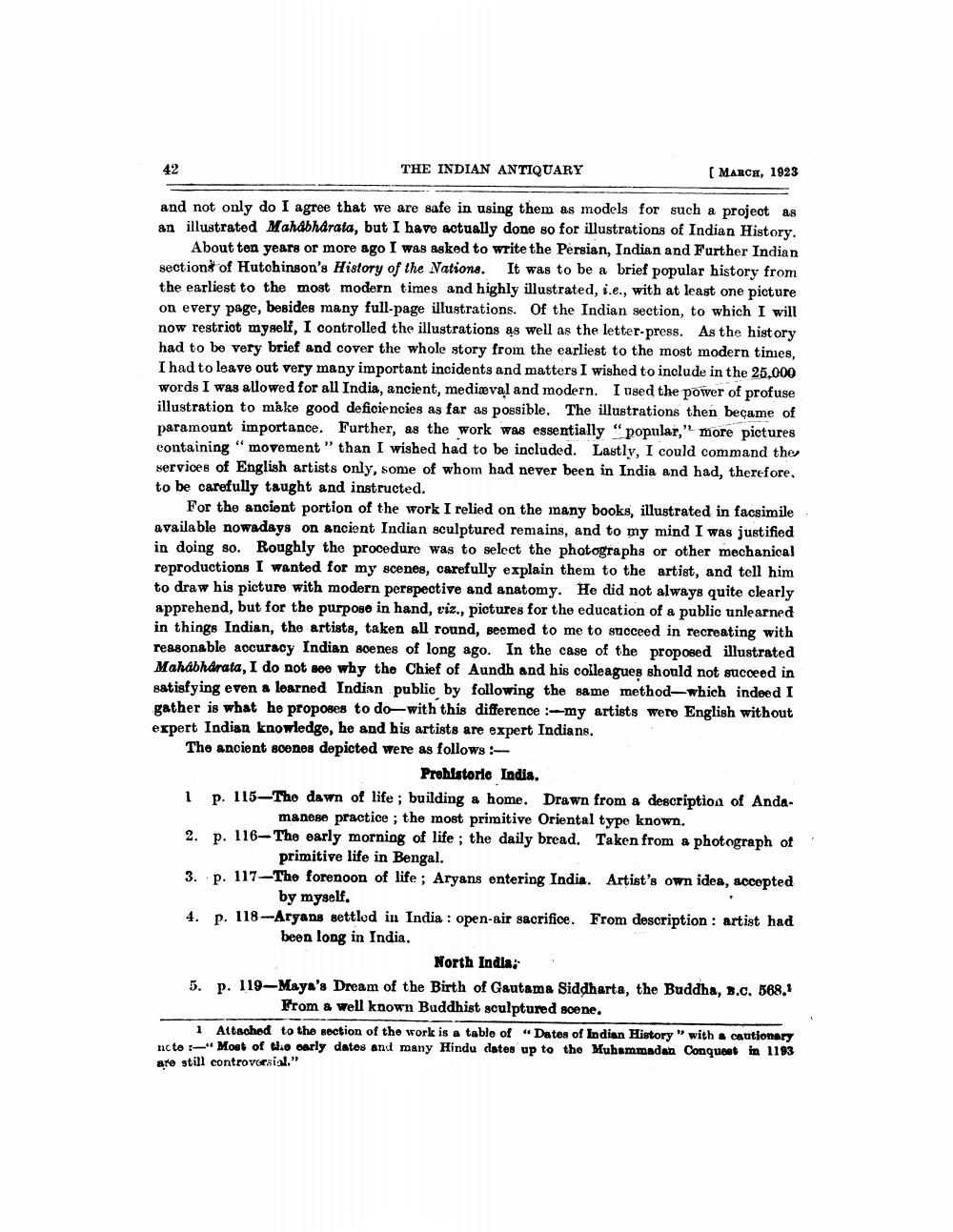________________
42
THE INDIAN ANTIQUARY
( MARCH, 1923
and not only do I agree that we are safe in using them as models for such a project as an illustrated Mahabharata, but I have actually done so for illustrations of Indian History.
About ten years or more ago I was asked to write the Persian, Indian and Further Indian sections of Hutchinson's History of the Nations. It was to be a brief popular history from the earliest to the most modern times and highly illustrated, i.e., with at least one picture on every page, besides many full-page illustrations. Of the Indian section, to which I will now restrict myself, I controlled the illustrations as well as the letter-press. As the history had to be very brief and cover the whole story from the earliest to the most modern times, I had to leave out very many important incidents and matters I wished to include in the 25,000 words I was allowed for all India, ancient, mediæval and modern. I used the power of profuse illustration to make good deficiencies as far as possible. The illustrations then became of paramount importance. Further, as the work was essentially "popular, more pictures containing "movement" than I wished had to be included. Lastly, I could command the services of English artists only, some of whom had never been in India and had, therefore, to be carefully taught and instructed.
For the anciont portion of the work I relied on the many books, illustrated in facsimile available nowadays on ancient Indian sculptured remains, and to my mind I was justified in doing so. Roughly the procedure was to select the photographs or other mechanical reproductions I wanted for my scenes, carefully explain them to the artist, and tell him to draw his picture with modern perspective and anatomy. He did not always quite clearly apprehend, but for the purpose in hand, viz., pictures for the education of a public unlearned in things Indian, the artists, taken all round, seemed to me to succeed in recreating with reasonable accuracy Indian scenes of long ago. In the case of the proposed illustrated Mahabharata, I do not see why the Chief of Aundh and his colleagues should not succeed in satisfying even a loarned Indian public by following the same method-which indeed I gather is what he proposes to do with this difference :-my artists were English without expert Indian knowledge, he and his artists are expert Indians. The ancient scenos depicted were as follows:
Prehistoric India. 1 p. 115—The dawn of life ; building a home. Drawn from a descriptioa of Anda
manose practice; the most primitive Oriental type known. 2. p. 116- The early morning of life; the daily bread. Taken from a photograph of
primitive life in Bengal. 3. p. 117-The forenoon of life ; Aryans entering India. Artist's own idea, accepted
by myself. 4. p. 118-Aryans settled in India : open-air sacrifice. From description : artist had been long in India.
North India 5. p. 119-Maya's Dream of the Birth of Gautama Siddharta, the Buddha, B.c. 568.
From a well known Buddhist sculptured soene. 1 Attached to the section of the work is a table of “Dates of Indian History with cautionary ncto "Most of the oarly dates and many Hindu dates up to the Muhammadan Conqueet in 1193 are still controveesial."




